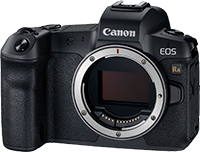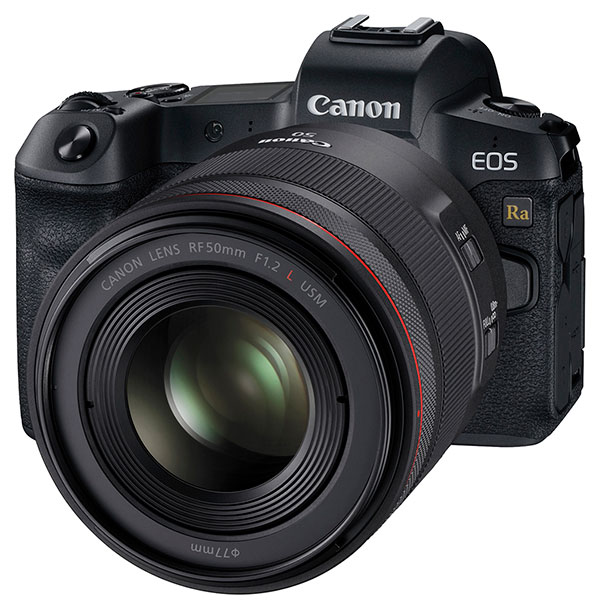Full-frame astrophotography fun: Canon EOS Ra tweaks the EOS R to better capture the heavens
posted Wednesday, November 6, 2019 at 5:31 PM EDT

If you're a fan not just of stargazing, but of recording the heavens for posterity as well, then Canon has some great news for you. (And it was officially revealed, perhaps rather fittingly, in the wee hours of last night.) After a lengthy absence from a digital camera niche that the company originally pioneered, it's not only returning with its first new astrophotography-oriented camera in close to a decade, but also revealing its first ever full-frame astrophotography camera. And as if that news wasn't already cool enough, it's also the first mainstream mirrorless camera to be targeted specifically at astrophotographers.
Canon's first entry in the astrophotography market came just five years or so after its first homegrown DSLR. Way back in early 2005, the Canon EOS 20Da became the company's first DSLR -- and only the second in the industry -- to offer a live preview image on its LCD monitor, allowing it to be used for focusing on the night sky. It also removed the regular infrared cut filter of the standard EOS 20D, and replaced it with one designed to pass 2.5x as much light in H-alpha wavelengths. Seven years later, Canon followed up with the 60D-derived EOS 60Da, offering 3x transmittance of H-alpha wavelengths. And until now, that was the company's last word on the topic, even as long-time rival Nikon brought things into the full-frame arena with its own D810-based Nikon D810a, again with a special IR cut filter that would increase passage of H-alpha wavelengths.

To date, all of these offerings have had shared one defining characteristic, other than their special IR cut filters. They were all based upon DSLR designs, even though for astrophotography their optical viewfinders essentially became useless, as the mirror had to be raised to allow for framing and focusing on the LCD monitor instead. Now, astrophotography enters the mirrorless age with the EOS Ra, and thanks to its electronic viewfinder, you no longer need disrupt the night vision of those around you with your LCD monitor. And in the process, Canon follows Nikon's lead with its first full-frame astrophotography model.
As you've no doubt guessed by now, the, Canon EOS Ra is essentially just a standard EOS R with a couple of specific modifications allowing for astrophotography. It sports the exact same 30.3-megapixel full-frame sensor as in that camera, as well as the same body, lens mount, viewfinder, DIGIC 8 processor, autofocus setup and so on. There are only two notable differences in the EOS Ra, as compared to the standard EOS R. Firstly, there's a modified IR cut filter as in past models, this time said to offer 4x greater transmission of H-alpha wavelengths. Secondly, Canon has added a 30x maximum magnification on the electronic viewfinder or LCD monitor live view feed, instead of the 10x magnification of the standard model, so as to allow for more accurate focusing.

And that, in terms of the hardware and firmware side of things, is it as far as the changes go. The only other difference of note is a list price that's about US$200 higher than the standard EOS R, and some US$700 above its current street pricing. Available just in time for the holiday season from mid-December 2019, pricing for the Canon EOS Ra is set at around US$2,500 body-only.
If you want the EOS Ra in your camera bag as soon as possible, grab your place in the preorder queue now at our affiliates, Adorama or B&H Photo. Whichever you choose, a portion of your purchase price will help to support this site at no extra cost to you!